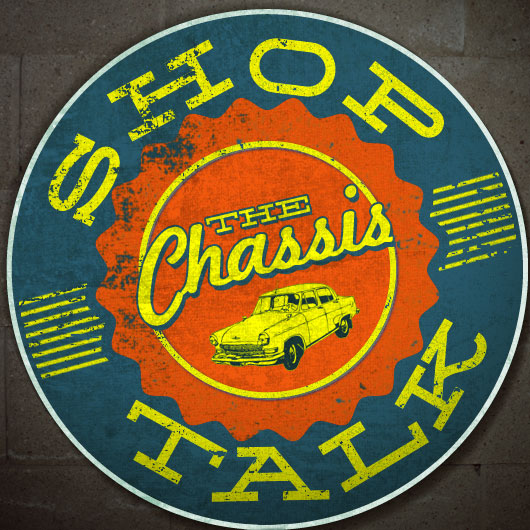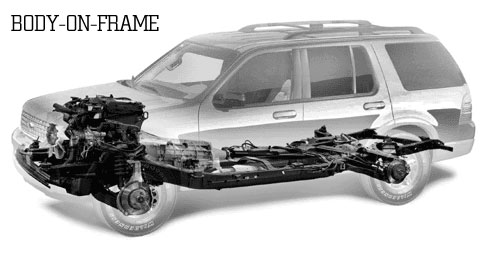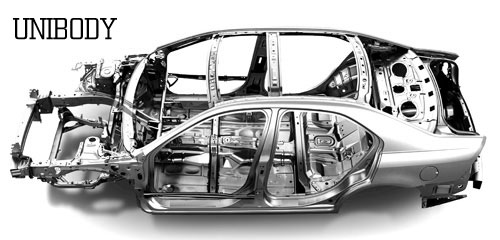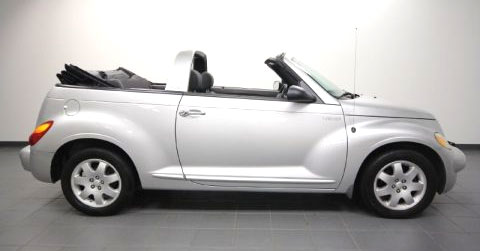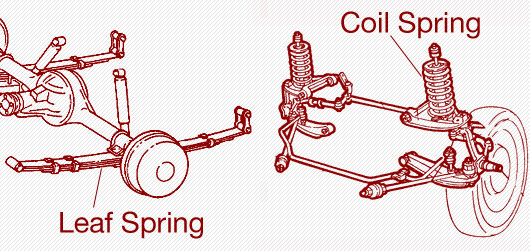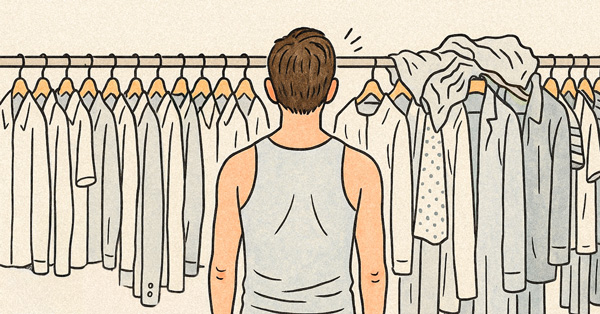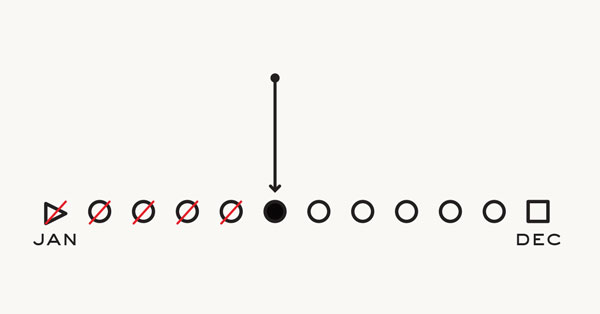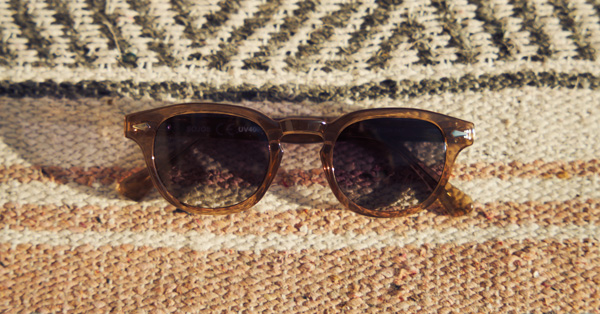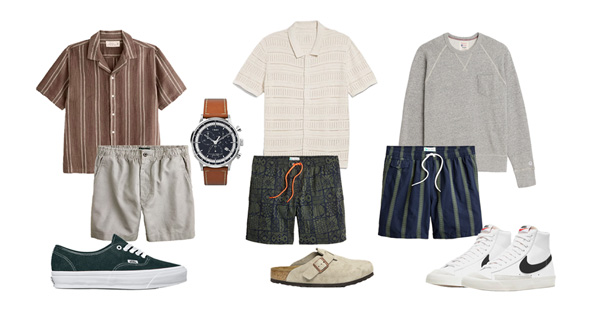In this installment of Shop Talk, we’re going to discuss my favorite aspect of automotive fundamentals; the chassis (pronounced: chas-E). There are basically two types of car guys: “power guys”, and “handling guys”. Power guys are in to grunt and noise and tire smoke. Handling guys are into physics and dynamics and finesse. The best analogy I can give is to say that if a power guy is a bare-knuckle boxer, then a handling guy is a ninja. Handling is what makes your car feel safe and stable when you make an emergency maneuver; it is what makes it comfortable as you cruise on the interstate; and it is what makes it fun when you’re winding your way down a twisty mountain road.
The chassis can be broken down into a few key components: the body and frame; springs; dampers; and swaybars. While each component is immensely complex and intricate, understanding the basic principles of each one can help you better comprehend what is happening when you drive. It can also help you make an informed decision if you decide you want to improve on this area of your vehicle’s performance. If, after reading this, you want to learn more, you can find many books on chassis and suspension dynamics written by people with large glasses, and even larger calculators.
Body
The largest part of the chassis, literally, is the body. The body of the vehicle is where you spend all your time. You sit in it, you sing along with the radio in it, and you spill your fries in it. There are two type of bodies used in most vehicles: body-on-frame, and unibody.
Body-on-frame was used in many older vehicles, and is still used in most modern day trucks and truck based SUVs. As the name implies, the body is attached to a frame. The frame ties the body to the rest of the suspension. Having a frame makes the vehicle heavier but it also makes it stronger. Trucks still use frame-on-body construction to support the payload carried in the bed and to distribute the weight when pulling a trailer. The Jeep Wrangler is one of the few non-truck based vehicles that still use a body-on-frame design. This is done partly to increase the ruggedness of the vehicle and allow it to withstand the off-road abuse the vehicle is known for, but also to keep the vehicle’s body rigid since it has a fully removable top and doors. Do all convertibles have a frame? No, and we’ll explain why in the next section.
Unibody construction is a marvel of modern engineering. To put it simply, the body of the car is designed in such a way that it does not require a frame. The body is the frame. The nose, the tail, the floors, the ceiling, even the pillars between the doors are all part of the structure of the car. Think of an egg. The shape of the shell gives it strength. Crack the shell, even a little, and it collapses.
This is what would happen if you cut the middle section of the roof off of your old Honda CRX hatchback to make a targa-top (section above the front seats is removable) like on a Corvette. Trust me. In my youth we did this to a friend’s car. When we got back from the test drive, we found that the doors would not open. After crawling out through the newly removed roof, we forced the doors open and the car instantly folded slightly in half. Two days later it was in the junkyard and he was bumming rides to school for the rest of the year.
So how do car manufacturers make convertible versions of unibody cars like the mustang, Camaro, Solara, and Mini Cooper? They do what we as foolish teenagers did not think of, they reinforce the body. Extra supports are put in place to strengthen the body. This is the reason for that hoop you see when a (gag) PT Cruiser convertible has its top down. Without these, the car would creak and twist when going around corners and eventually fall apart. Even the reinforcements don’t completely eliminate this twisting. If you ever watch a Top Gear review of a convertible car, you’re bound to hear Jeremy Clarkson mention that it feels sloppy compared to the hardtop version. This is due to a weak spot in the “egg’s shell”.
Springs
Springs support the weight of the vehicle, its occupants, and whatever you are toting around. Without springs, your car or truck would have an indescribably uncomfortable ride. Remember when you were a kid and you got to drive a go-cart around your cousin’s yard? Remember how you would clack your teeth together when you hit a bump in the grass? Imagine that at 60mph.
There are two types of springs that vehicles use: coil springs, and leaf springs.
Picture a spring in your head. Does it look like that tiny brass one that always flies out of your pen when you’re playing with it at your desk? That is a coil spring. The one on your car is obviously much larger and harder to compress, but it’s the same concept. Coil springs are used on cars because they are more compact, lighter, and more tunable than leaf springs. Your springs are tuned to the weight and intended purpose of your vehicle. If the springs are too soft, you get “caddy syndrome” and the car floats and bobs like a rowboat in the ocean. If the springs are too hard, they won’t compress. Usually springs that are meant to lower a car, also have a more firm spring setting. This is done to reduce body movement since the car is closer to the ground. When the springs are too firm (usually a cheap set or the owner did not do their research) you end up with that choppy, fast bouncing you see on some “tuner” cars.
Shocks/ Struts
The roads you drive on are littered with bumps, dips, and pot holes. Some you feel, many you don’t. The reason for this is your shocks or struts. Shocks and struts, or dampers, control the up and down motion of the vehicle’s suspension. They consist of a tube (known as the body) filled with pressurized oil or gas, and a shaft that compresses that oil or gas. As your wheel goes over a bump, the suspension compresses and returns to its original position. The damper controls how fast this happens. Without dampers, the vehicle would bob up and down until the spring releases all of its energy. Here is a short video of what happens when you hit a bump at speed with no rear dampers.
http://www.youtube.com/watch?v=5Mr-UgWr8-s
The main difference between a shock and a strut is their construction. Shocks are bolted on independently of the spring. They are used with both coil and leaf springs. Struts are used in conjunction with a coil spring. They have a perch that the spring sits on and the whole assembly bolts onto the vehicle. Neither is necessarily better than the other. Just as there is more than one way to skin a cat, there is more than one way to design a suspension.
Swaybars
These are technically anti-swaybars, but cool street racers and gearheads leave the anti-part out. As the name implies, these simple yet important items control the sway, or lean, of your vehicle when you go around corners. As the body leans, weight is shifted. Too much or too little weight on a tire in a turn will cause it to loose traction. This will result in loss of vehicle control and your possible death. The goal is to keep the weight as evenly distributed as possible, so all four tires have traction all the time. If you are interested in learning more about how swaybars work, you can watch this clip by EngineeringExplained.
Hopefully this has helped give you a better idea of what is involved with your vehicle’s suspension. It really is what makes or breaks a car in terms of fun and enjoyable driving and a comfortable commute. Until next time, remember, it is more fun to drive a slow car fast than it is to drive a fast car slow.



